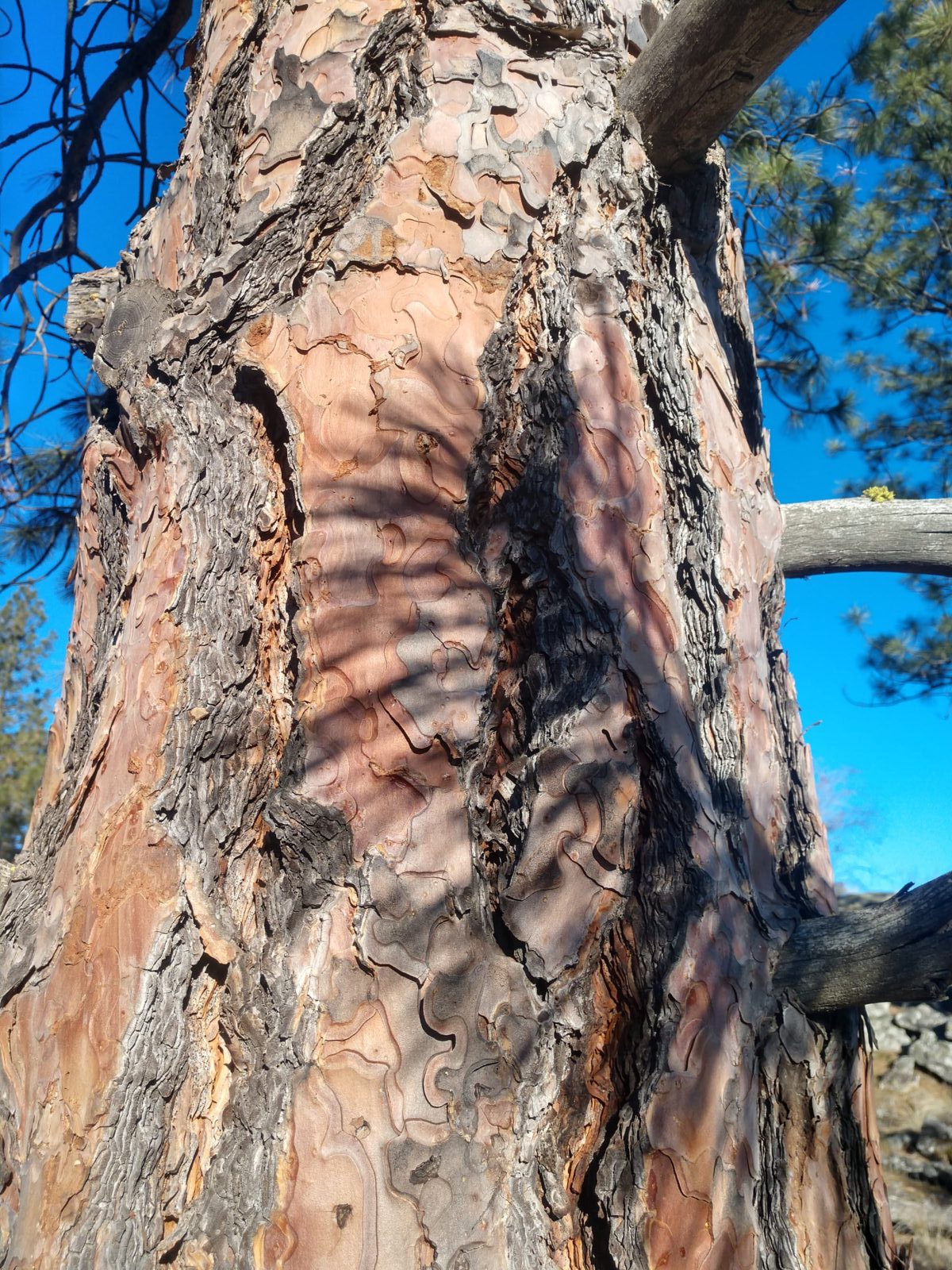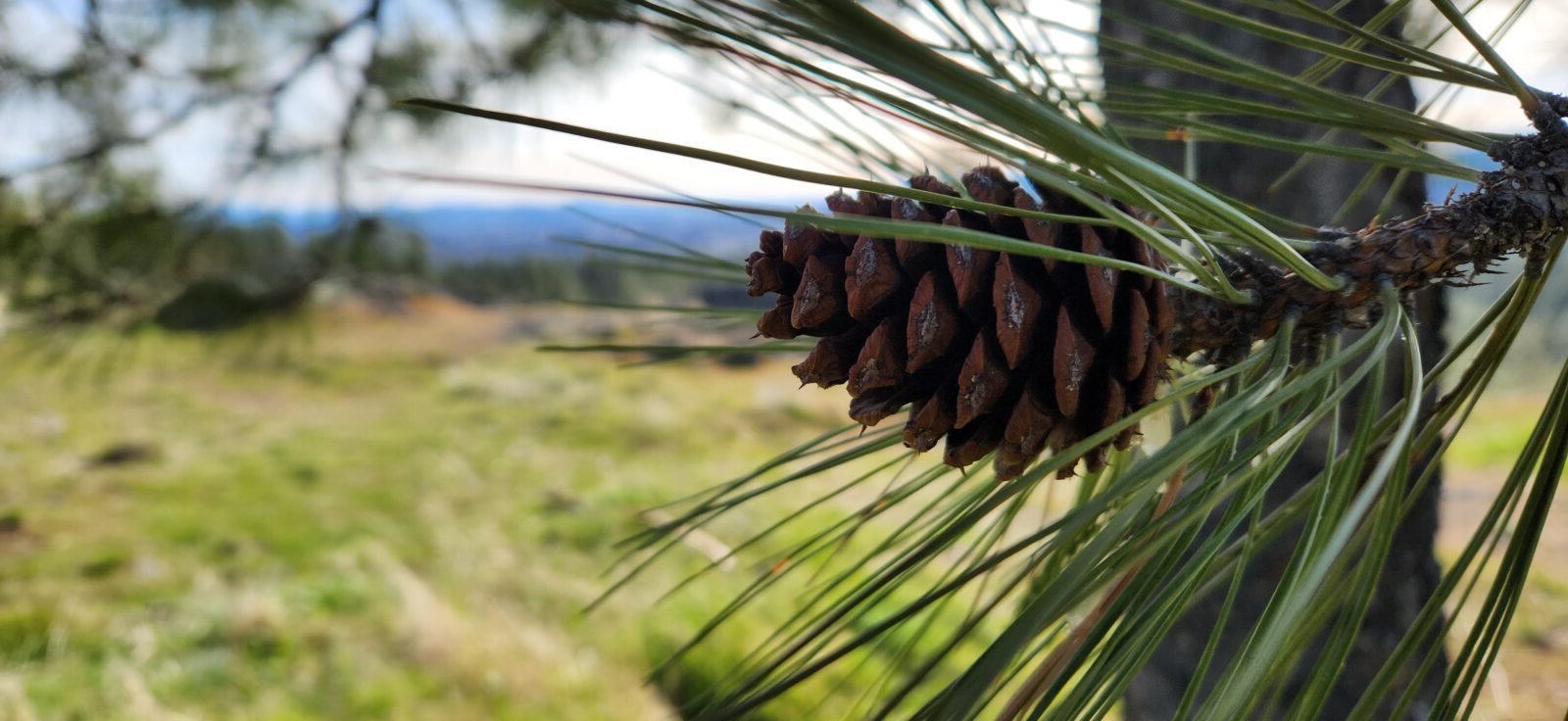Pine Beetles
May 26, 2023
May 26, 2023
By Pat Loomis, Conservancy Volunteer

It doesn’t take too much time of living here in the Inland Northwest before some outdoorsman will talk your ear off about the pine beetle. If you’ve been on a hike and noticed stands of ubiquitous ponderosa pines looking not-so-healthy, the pine beetle could be the culprit. Pine trees are susceptible to several types of tree diseases as well as insect invasions. These can be brought on by drought conditions and environmental stress. But in recent years, the Mountain Pine Beetle has been one of the most notable.
The Mountain Pine Beetle is an insect that will quickly kill a pine tree. This beetle is a species of bark beetle native to forests of western North America from Mexico to central British Columbia. The Pine Beetle has a hard black exoskeleton and measures 5 mm (1/4 inch) or about the size of a grain of rice. Mountain Pine Beetles inhabit ponderosa, white bark, lodge pole, Scots, jack, and bristlecone pines.
Normally these insects would be beneficial in the life of a forest by attacking old or weakened trees to speed the development of a younger forest. However, unusually long, hot, dry summers and mild winters can lead to an outbreak of forest insect blight.
The beetles infect pine trees by laying eggs under the bark. They introduce blue stain fungus into the sapwood. This fungus prevents the tree from repelling and killing the attacking beetles with tree pitch. The fungus blocks water and nutrient transport in the tree. On the tree’s exterior this results in popcorn masses of resin called “pitch tubes,” where the beetles have entered.
A sign of MPB infestation is a faded and discolored pine tree. Browning in a pine tree is caused by the inability of the tree to take up enough water to keep pine needles alive. Regardless of beetle attack, a pine cannot survive being brown from July/August until November. They simply cannot survive without any green foliage; they are likely dead. Pine trees are not like oaks and other broadleaf trees that can regenerate from disease or stress.
The life cycle of the MPB is four stages: egg, larva, pupa, and adult. The adult burrows into the tree to lay eggs in vertical tunnels about 3 feet long. These eggs hatch in 10 to 14 days. Once the eggs hatch, the offspring feed on the living tree from the inside. Over a few weeks, the larva destroys the tree’s vital systems. After a few months, the trees turn red and brown and die. One year for the cycle and the beetle is off to new trees.

There are management techniques. Some include pheromone (Verbenone) baiting, luring the beetles into trees baited with synthetic hormones. Other management techniques include single harvesting of infected trees, “snip-and-skid” removal of groups of distressed trees, biopesticides (Chitosan), and in some cases pesticides to kill the beetle. Also, natural predators of the beetle include woodpeckers, other species of insect-eating birds, and some insect-seating insects.
For more information about what local land managers and ecologists are doing to combat pine beetle infestations in our area, check out these resources: